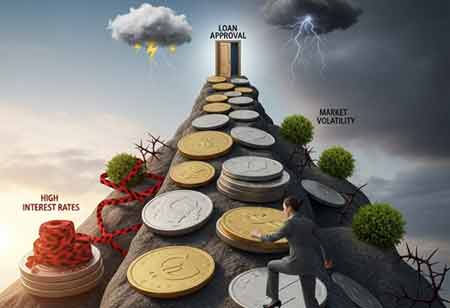CLOSE
Specials
- Trading Solutions APAC
- Wealth Management MENA
- CPA Firms Canada
- Financial Risk Management APAC
- Investment Banking APAC
- Corporate Advisory APAC
- Regtech APAC
- Escrow Services
- Digital Banking Latam
- Investment Advisory APAC
- Treasury Management Europe
- RegTech Europe
- Financial Risk Management Europe
- Mortgage Broker
- Financial Licensing Europe
- RIA Advisory Europe
- FinTech Canada
- Financial Asset Management APAC
- Financial Health Europe
- Trading
- Investment Services Europe
- Lending Mangment Latam
- Payment Solution Europe
- Broker Dealer Firms Canada
- Alternative Investments Canada
- Financial Fraud
- Investment Management Latam
- Investment Banking Canada
- Lending Management
- Payment Solution
- Proprietary Trading Europe
- Wealth Management
- FinTech
- Financial Brokerage Firm APAC
- Investment Advisory Europe
- Claim Adjusting
- Claim Adjusting APAC
- Mergers and Acquisitions Consulting APAC
- Equipment Financing
- CPA Firms
- Mergers and Acquisitions Consulting Canada
- Investment Services
- Valuation Services Canada
- Wealth Management APAC
- Broker Dealer Firms
- Debt Collection Agencies
- Mergers and Acquisitions Consulting
- FinTech Europe
- Fintech Latam
- Financial Planning / Retirement
- Investment Management
- Financial Compliance
- Payment and Card Latam
- Financial Marketing
- Investment Services Latam
- Digital Insurance Europe
- Alternative Investments
- Trading Solutions Europe
- Tax Advisory Canada
- Mergers and Acquisitions Consulting Latam
- Wealth Management Latam
- Digital Banking Europe
- Business Loan
- Financial Portfolio Management Canada
- Financial Restructuring Europe
- Mergers and Acquisitions Consulting Europe
- Wealth Management Europe
- Debt Collection Agencies Europe
- CFO Services
Weekly Brief
×Be first to read the latest tech news, Industry Leader's Insights, and CIO interviews of medium and large enterprises exclusively from Financial Services Review
Thank you for Subscribing to Financial Services Review Weekly Brief
How Technology Empowers Forex Traders
The forex market is undergoing significant technological advancements, including algorithmic trading, automation, AI, and machine learning, with future technology integrating blockchain, DLT, and VR.

By
Financial Services Review | Friday, June 14, 2024
Stay ahead of the industry with exclusive feature stories on the top companies, expert insights and the latest news delivered straight to your inbox. Subscribe today.
The forex market is undergoing significant technological advancements, including algorithmic trading, automation, AI, and machine learning, with future technology integrating blockchain, DLT, and VR.
FREMONT, CA: The foreign exchange (forex) market is the largest financial market globally, with daily trading volumes surpassing six $ trillion. Over the years, it has undergone numerous technological advancements that have fundamentally transformed the trading landscape. Evolving from the early days of manual trading, the market now leverages sophisticated systems driven by artificial intelligence and machine learning, reflecting its substantial progress.
Algorithmic Trading and Automation
Algorithmic trading leverages advanced computer programs to execute predefined transaction strategies at high speeds, revolutionising the forex market. This technology enables traders to process vast amounts of data and execute trades rapidly, even on legacy platforms like MetaTrader 4. Increasing the speed of transactions allows traders to capitalise on market opportunities more effectively. Additionally, it minimises human error, resulting in more precise and efficient trades.
Artificial Intelligence (AI) and Machine Learning (ML)
AI and ML are revolutionising forex trading by enabling traders to make more informed decisions and optimise their strategies in real-time. AI-powered systems can process vast amounts of data, allowing for immediate decision-making. ML systems can analyse historical forex data to identify patterns, facilitating the development of trade strategies. Adopting AI and ML in forex trading has improved decision-making, enhanced risk management, and personalised approach. These technologies allow for real-time data analysis, enabling traders to respond swiftly to market changes, identify patterns and trends, and develop customised trading strategies based on individual preferences and market conditions.
The Future of Forex Technology
The forex market is poised for substantial transformation driven by rapid advancements in trading technology. Integrating artificial intelligence (AI) and machine learning (ML) into forex trading platforms is anticipated to enhance trading efficiency significantly. Adopting blockchain and Distributed Ledger Technology (DLT) is expected to increase transparency, reduce counterparty risk, and lower transaction costs. Additionally, incorporating virtual reality (VR) and augmented reality (AR) technologies can elevate the trading experience. Nevertheless, regulators must adapt their policies to ensure these innovations' responsible and ethical implementation.
The evolution of forex technology has fundamentally transformed market interactions for traders. The advent of algorithmic trading, coupled with the integration of artificial intelligence and machine learning, has empowered traders to make more informed decisions, execute trades with heightened precision, and manage risk more effectively.
Looking ahead, the future of forex technology holds advancements and opportunities. By staying informed and adapting to these innovations, traders can strategically position themselves to capitalise on emerging trends and thrive in the dynamic forex market landscape.

Copyright © 2025 Financial Services Review. All rights reserved






